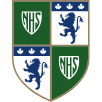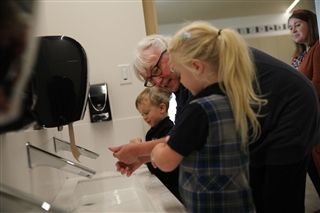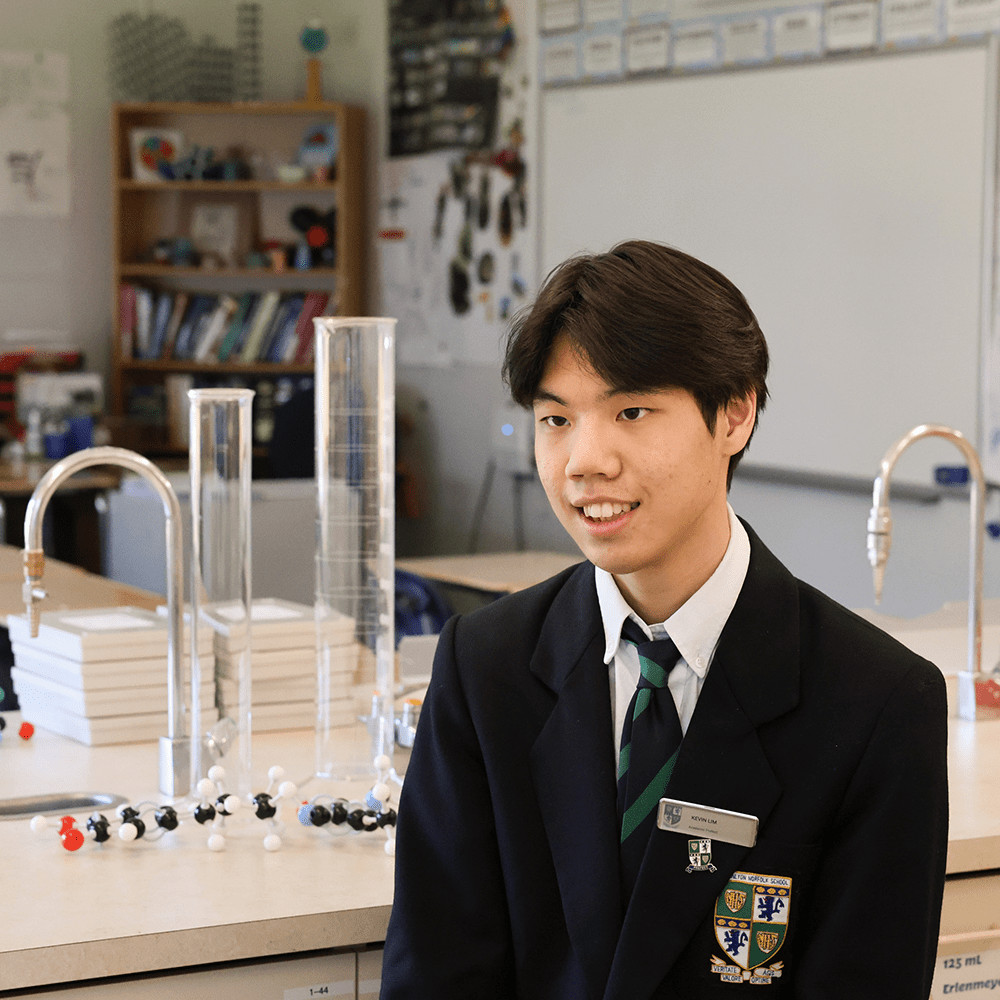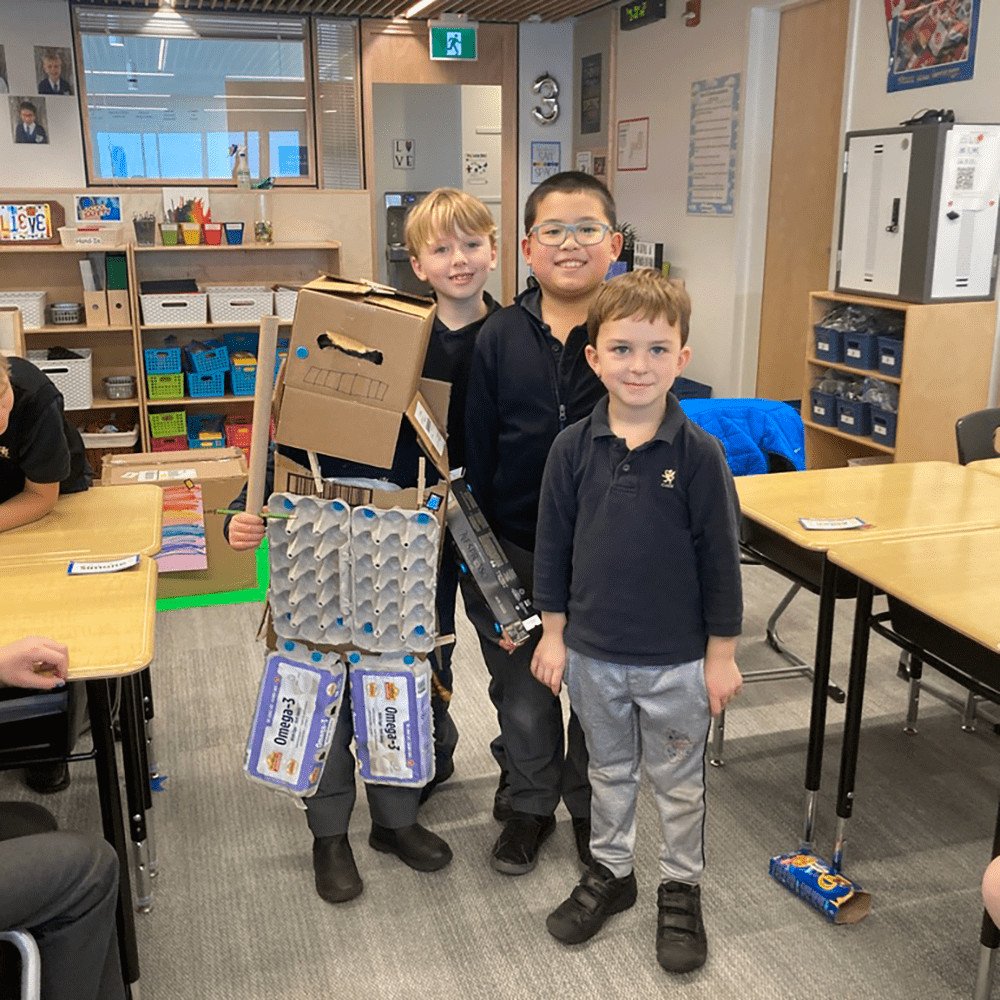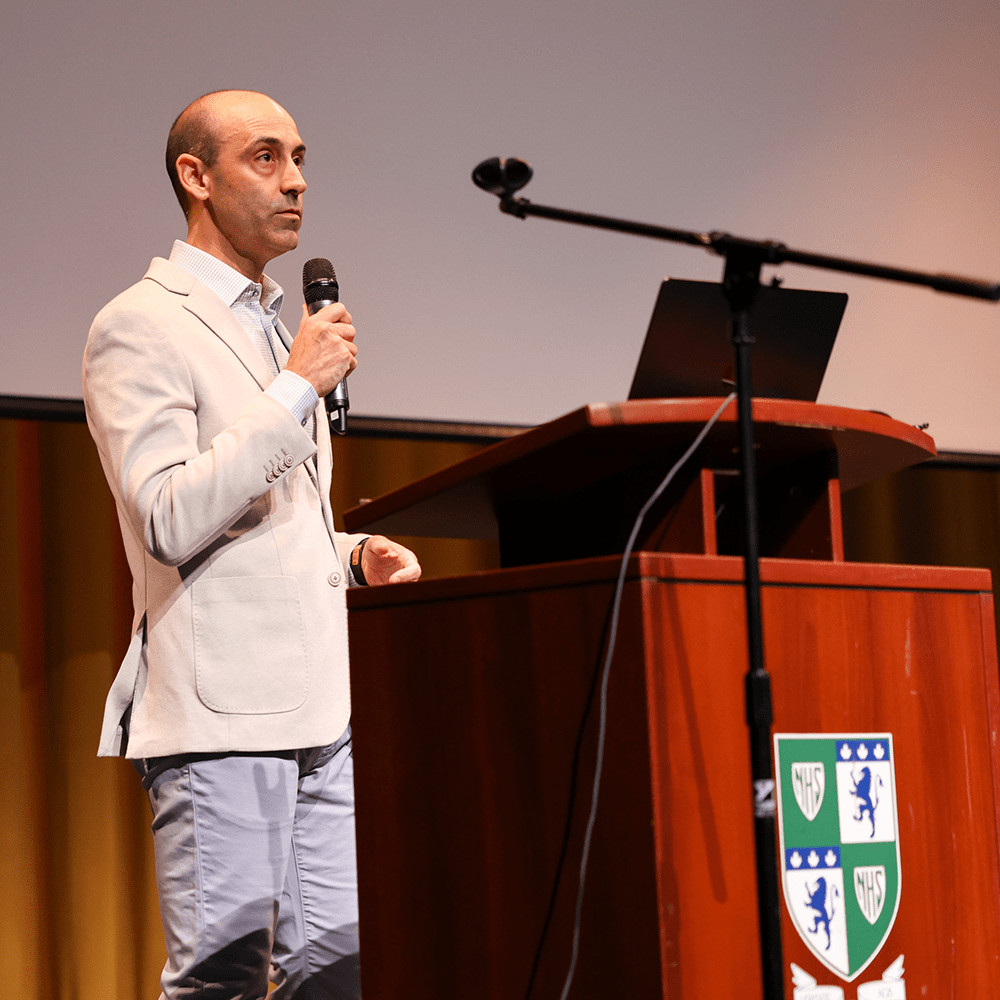The GNS Kindergarten scientists have been engaged in hands-on investigations and experiments, from forces to properties of familiar materials. They’ve had opportunities to further develop their observation, data recording, and communications skills, as they’ve inquired into ‘How The World Works.’
The inquiry unit has been supported with plenty of expert visitors, including faculty, parents, and University of Victoria students. Our Kindergarten scientists have had meaningful opportunities to learn more about how science is a part of their daily lives.
Experts:
Julie Findlay: This current parent and alumae is a physical therapist that taught the classes about the science of bones and joints.
Megan and Matt D’Angelo: These current parents taught the students about coding, programming, and the design cycle, which connected to our robot-building.
Ms. Nancy Fletcher: Our Art teacher who explained the science in art, colour mixing, oil resist paintings, and the use of force (push/pull) to create textured paintings. The students enjoyed painting with toy cars, salad spinners, combs and forks.
Nurse Susan: Our school nurse talked about the science of germs and the importance of hand washing.
Mr. Chad Holtum: Our Head of School demonstrated science in music by exploring pitch with a water xylophone.
Ms. Megan Durovick: Our Educational Technologist helped connect to coding with robot-building. This involed co-planning with HF teachers to provide an opportunity for the Kindergarten students to apply their knowledge about the attributes of familiar materials to build robots from recycled items. This gave them the chance to be makers in the new Innovation Lab by planning, designing and building.
University of Victoria: Through the Let’s Talk Science initiative, students participated in a virtual “Bounce and Roll” workshop with current science and education students where they investigated how different materials impact the movement of familiar objects.
The Kindergarteners have also been able to connect their classroom learning to Nature School investigations, using magnifying glasses to look closely at texture in nature, then discussing their observations. They created driftwood boats to explore buoyancy, as well as structures that could stand on their own, using sand, water, rocks and sticks. They made predictions about which items (rocks, crab shells, and sea glass) would sink or float. These activities represent a mix of guided inquiry, as well as open-ended, student-driven action.
What a fun unit of inquiry the Kindergarten classes had. Thank you to all the experts who shared their knowledge throughout!

